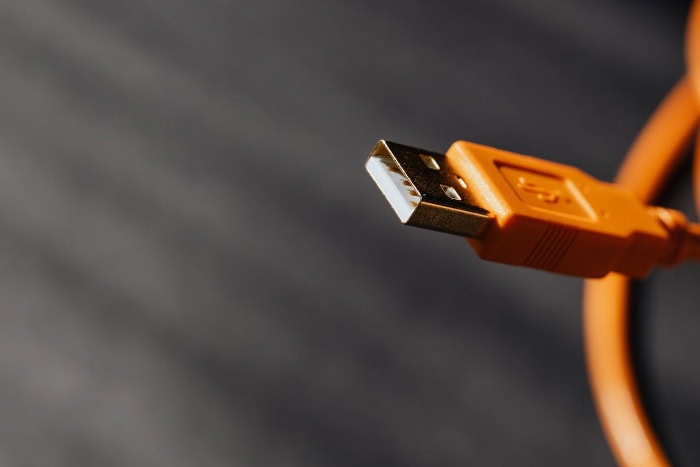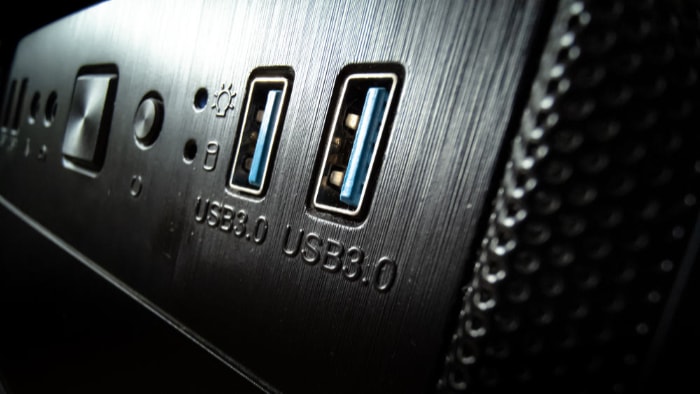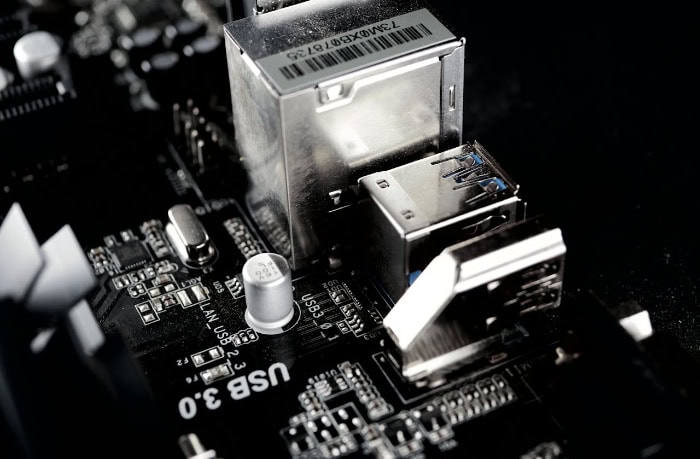USB 2.0 vs 3.0: Making Sense of Their Features and Uses

USB technology has become a universal standard, powering everything from flash drives to external hard drives and more. Over the years, it has undergone significant advancements, with USB 2.0 and USB 3.0 marking two important generations in its evolution.
While both are widely used, their differences go far beyond just speed, influencing everything from device performance to power efficiency.
Technical Specifications
USB 2.0 and USB 3.0 serve similar purposes but differ significantly in their technical attributes. These differences impact performance, power efficiency, and the overall user experience.
Data Transfer Speeds
The most noticeable difference between USB 2.0 and USB 3.0 lies in their data transfer capabilities. USB 2.0, introduced in 2000, offers a maximum theoretical data transfer rate of 480 megabits per second (Mbps).
While this was a substantial improvement at the time of release, it can feel limiting today, especially when transferring large files such as high-resolution videos or extensive data backups.
USB 3.0, launched in 2008, takes data transfer speeds to a new level. It boasts a maximum theoretical rate of 5 gigabits per second (Gbps), making it up to 10 times faster than USB 2.0.
This speed increase is enabled by enhanced communication protocols and the addition of more data pathways, allowing devices to handle demanding tasks more efficiently. In real-world usage, actual transfer speeds will vary depending on factors such as the device, cable quality, and data format, but USB 3.0 remains significantly faster.
Bus Width and Signal Lines
Another fundamental difference between USB 2.0 and USB 3.0 lies in their bus architecture. USB 2.0 utilizes a half-duplex communication mode, meaning data can only travel in one direction at a time.
This setup is sufficient for basic operations but can create bottlenecks during high-traffic data exchanges.
USB 3.0, on the other hand, uses a full-duplex communication mode, allowing data to flow simultaneously in both directions. This is achieved by increasing the number of signal lines from four in USB 2.0 to nine in USB 3.0.
These additional lines provide higher bandwidth and enable more efficient data transmission, particularly when multitasking or working with modern high-performance devices.
Power Output Capabilities
Power delivery is another area where USB 3.0 outshines its predecessor. USB 2.0 provides a standard power output of up to 500 milliamps (mA) at 5 volts, which is sufficient for most basic peripherals such as keyboards, mice, and small external drives.
However, it may struggle to power more energy-intensive devices like external hard drives or high-speed docking stations without additional power adapters.
USB 3.0 significantly increases power output, offering up to 900 mA at 5 volts. This allows it to support a wider range of devices directly through the USB connection, eliminating the need for external adapters in many cases.
Additionally, USB 3.0 incorporates better power management, reducing energy consumption when devices are idle or in low-power states.
Protocol Architecture
The protocol architecture of USB 3.0 is a major improvement over USB 2.0. USB 2.0 uses a polling-based communication system, where the host device continuously checks connected devices for data transfer requests. While functional, this approach can be inefficient, contributing to slower speeds and increased power consumption.
USB 3.0 introduces an interrupt-driven model, which allows devices to notify the host when they are ready to send or receive data. This proactive method not only enhances transfer speeds but also reduces unnecessary energy use by eliminating constant polling.
Additionally, USB 3.0 employs more advanced data encoding techniques, resulting in higher efficiency and better overall performance during simultaneous tasks.
Physical Characteristics

USB 2.0 and USB 3.0 not only differ in performance but also have distinct physical features that make them identifiable and functionally unique. These differences influence user convenience, compatibility, and durability.
Port Color Coding and Identification
One of the simplest ways to differentiate USB 2.0 from USB 3.0 is through port color coding. USB 2.0 ports are typically black or white on the inside, while USB 3.0 ports use blue plastic inserts. This color distinction provides an easy visual cue to identify the type of port on a device or computer.
Some modern USB 3.0 ports may also be marked with the letters “SS,” short for “SuperSpeed,” which is the branding used to highlight the faster capabilities of USB 3.0. These small design choices help users quickly distinguish between the two versions, particularly on systems with mixed USB configurations.
Connector Types and Design
Both USB 2.0 and USB 3.0 use the same basic connector types, such as Type-A, Type-B, and Micro-B, but USB 3.0 connectors have notable improvements in design.
The standard USB 2.0 Type-A connector, for example, is the familiar rectangular plug found on most devices. USB 3.0 retains this shape but incorporates additional pins for enhanced performance, which are internally housed to maintain physical compatibility.
USB 3.0’s Micro-B connector, used in devices such as external hard drives, features an extended design with an additional section to accommodate extra pins for faster data transfer. These design modifications ensure backward compatibility while offering improved functionality for devices that support the newer standard.
Cable Construction
The physical build of USB cables also sets USB 2.0 and USB 3.0 apart. USB 2.0 cables typically have four internal wires: two for power delivery and two for data transfer. These wires are sufficient for the half-duplex communication mode used by USB 2.0, where data can only move in one direction at a time.
USB 3.0 cables, however, are more complex. They include additional wires and shielding to support full-duplex communication, allowing data to flow in both directions simultaneously.
This makes USB 3.0 cables thicker and slightly heavier than their USB 2.0 counterparts. The additional shielding also helps reduce interference during high-speed data transmission, making USB 3.0 cables more reliable for demanding tasks.
Internal Wiring Configuration
The internal wiring configuration of USB 2.0 and USB 3.0 is another crucial distinction. USB 2.0 contains four wires: a positive and negative power wire and two signaling wires (D+ and D-). This configuration supports basic communication and power delivery but limits the speed and efficiency of data transfers.
USB 3.0 features a more advanced wiring setup, with nine wires in total. In addition to the wires present in USB 2.0, USB 3.0 adds four extra lines dedicated to data transfer (two for sending and two for receiving). These extra wires enable the faster speeds and full-duplex communication that USB 3.0 is known for. The improved wiring also reduces crosstalk and signal degradation, ensuring more stable performance, particularly during high-speed operations.
In essence, the physical differences between USB 2.0 and USB 3.0 go beyond aesthetics. They are carefully designed enhancements that reflect the technological advancements of the newer standard.
From color-coded ports to more sophisticated internal wiring, these features underline the progress made in making USB faster, more reliable, and capable of meeting modern data and power demands.
Performance Analysis

The performance of USB 2.0 and USB 3.0 is shaped by various factors, ranging from how quickly data transfers in real-world scenarios to how effectively they manage bandwidth and handle latency. These differences directly impact the efficiency and reliability of the connection.
Real-World Transfer Speeds
While theoretical maximum speeds often grab attention, real-world performance is what truly matters. USB 2.0 supports speeds of up to 480 Mbps, but under typical conditions, users can expect actual transfer rates to be closer to 30 to 40 megabytes per second (MBps).
Factors such as file size, device capability, and system overhead can further slow this down.
USB 3.0, on the other hand, offers a dramatic improvement with a theoretical maximum speed of 5 Gbps. In real-world use, transfer rates generally range from around 400 to 500 MBps, depending on the hardware and file types involved.
This substantial increase makes USB 3.0 far more suitable for tasks such as transferring large files, streaming high-definition media, or working with external solid-state drives (SSDs). Additionally, the improved transfer speed reduces waiting times, boosting overall productivity.
Bandwidth Management
Bandwidth efficiency is another area where USB 3.0 outperforms USB 2.0. USB 2.0 operates on a polling mechanism, where the host system continuously checks for data availability from connected devices, consuming bandwidth even when no data is being transmitted.
This method can lead to inefficient bandwidth usage, especially when multiple devices are connected simultaneously.
USB 3.0 introduces a more sophisticated approach by incorporating an asynchronous architecture. Devices now signal the host only when they have data ready to send or receive, freeing up bandwidth and allowing for better overall resource allocation.
This is particularly valuable in setups where many devices are connected to a single system, as USB 3.0 ensures smoother communication without unnecessary bandwidth wastage.
Latency Differences
Latency, or the delay in data communication, plays a significant role in the overall performance of USB connections. USB 2.0’s half-duplex communication can introduce noticeable delays, as it can only send or receive data at any given time.
These delays become more apparent when handling tasks that require frequent back-and-forth data exchanges, such as video conferencing or online gaming.
USB 3.0 reduces latency by employing full-duplex communication, enabling simultaneous data transmission and reception. This capability allows for faster and more seamless interaction between devices, making USB 3.0 ideal for applications where low latency is a priority.
Additionally, the more advanced protocol of USB 3.0 ensures faster response times, further enhancing the user experience.
Signal Quality and Interference
Signal stability is essential for maintaining reliable data transfer. USB 2.0, with its simpler wiring and more limited shielding, is more prone to signal degradation and interference, particularly over longer cable lengths.
Crosstalk between wires can occasionally lead to errors in data transmission, requiring retransmissions that slow down overall performance.
USB 3.0 improves signal quality through the use of additional shielding and higher-quality cables. The advanced wiring configuration of USB 3.0 reduces interference and maintains a cleaner signal, even during high-speed data transfers.
This improvement ensures better performance and reliability, particularly in environments with multiple electronic devices that could cause interference.
The performance differences between USB 2.0 and USB 3.0 are a reflection of the technological advancements made to address modern connectivity demands. From faster real-world speeds to more efficient bandwidth usage and lower latency, USB 3.0 delivers a noticeable upgrade in performance for tasks that require speed and reliability.
Device Compatibility

Compatibility between USB 2.0 and USB 3.0 devices is a significant aspect to consider, as it ensures smooth integration across various generations of hardware and software.
While USB technology has been designed with versatility in mind, factors such as backward compatibility, hardware requirements, operating system support, and device recognition play essential roles in how these standards interact with older and newer systems.
Backward Compatibility Features
One of the strengths of USB technology is its backward compatibility. USB 3.0 devices are designed to work with USB 2.0 ports and vice versa, ensuring that older devices can still operate on newer systems.
However, the performance capabilities of the connection default to the lower standard. For example, if a USB 3.0 flash drive is connected to a USB 2.0 port, it will operate at USB 2.0 speeds.
This compatibility is achieved through the shared physical design of connectors. USB 3.0 ports and cables include additional pins to support higher speeds, but they retain the original pins used by USB 2.0, allowing for seamless integration.
This feature makes it easy for users to transition to newer USB devices while maintaining functionality with their existing equipment.
Host Controller Requirements
The host controller plays a crucial role in determining compatibility and performance. USB 2.0 devices are supported by almost all modern computers and peripherals, as their hardware integrates USB 2.0 controllers by default.
This makes USB 2.0 highly accessible and widely supported across older and budget-friendly devices.
For USB 3.0, the compatibility story depends more on the host system's hardware capabilities. Systems require USB 3.0-specific host controllers to support the advanced features and speeds of this standard.
While most contemporary computers include USB 3.0 controllers, particularly on laptops and desktops manufactured after 2010, users with older systems may need to invest in an updated motherboard or an add-on card to take full advantage of USB 3.0 devices.
Operating System Support
The operating system plays a vital role in how USB devices are recognized and utilized. USB 2.0 support is universal, as almost all operating systems from the early 2000s onward are equipped to handle USB 2.0 devices without requiring special drivers.
This level of support ensures that older USB 2.0 peripherals can be used on nearly any system, regardless of its age or software version.
USB 3.0, being a more advanced standard, requires operating systems that can handle its enhanced features. Modern operating systems such as Windows 7 and later, macOS versions from 2010 onward, and most contemporary Linux distributions come with native USB 3.0 support.
For older systems, it may be necessary to download and install appropriate drivers to enable USB 3.0 functionality. This can sometimes present challenges for users of legacy hardware running outdated operating systems.
Device Recognition Process
The process of recognizing connected devices differs slightly between USB 2.0 and USB 3.0 due to their differing communication protocols. USB 2.0 relies on a polling-based method, where the host system continuously checks the connected device for any data transfer requests.
Although functional, this process is slower and consumes more system resources.
USB 3.0 improves device recognition with its interrupt-driven architecture. Here, devices actively notify the host when they are ready to send or receive data, enabling faster detection and more efficient use of system resources.
This process also reduces the latency associated with device initialization, making USB 3.0 connections feel quicker and more responsive.
Compatibility across USB versions highlights the thoughtfulness of USB design, allowing users to mix and match devices without significant issues. From how devices are recognized to the operating systems and hardware required, USB 2.0 and USB 3.0 maintain a balance of forward-thinking innovation and practical usability.
Implementation Considerations

When choosing between USB 2.0 and USB 3.0, several practical factors come into play, especially when considering the cost, power efficiency, installation process, and the specific needs of a given use case. These considerations help determine which USB standard is better suited for different scenarios, balancing performance with practicality.
Cost Factors
Cost can be a significant factor when deciding between USB 2.0 and USB 3.0. USB 2.0 devices, cables, and ports tend to be more affordable due to their maturity in the market and the simplicity of their design.
Manufacturers can produce USB 2.0 components at a lower cost, making them a budget-friendly option for tasks that do not require high-speed performance, such as connecting keyboards, mice, and printers.
USB 3.0 components are generally more expensive because they incorporate advanced technology and higher-quality materials. For instance, USB 3.0 cables require additional wiring and shielding to support faster data transfer speeds and improved power delivery.
While the higher price may be justified for applications demanding better performance, those with basic connectivity requirements may find USB 2.0 more economical.
Power Efficiency
Power efficiency is another notable difference between USB 2.0 and USB 3.0, particularly in terms of power delivery and consumption. USB 2.0 can supply up to 500 milliamps (mA) at 5 volts, which is sufficient for low-power peripherals such as basic external hard drives or charging smaller gadgets.
However, this limitation can result in slower charging speeds or the need for additional power adapters when connecting more demanding devices.
USB 3.0 improves on this with the capability to deliver up to 900 mA at 5 volts, offering nearly double the power output. Devices connected via USB 3.0 often charge faster and operate more efficiently without the need for external power sources.
Additionally, USB 3.0 integrates superior power management features, reducing energy consumption by putting devices into low-power states when they are idle. This is especially beneficial in reducing overall power use in computers and laptops.
Installation Requirements
From a hardware perspective, both USB 2.0 and USB 3.0 rely on similar installation processes, but compatibility with existing systems may vary. USB 2.0 is nearly universal, as most devices and systems manufactured over the past two decades include USB 2.0 ports and controllers as standard features.
Installing USB 2.0 components typically involves plugging the device into the port without the need for additional upgrades or modifications.
Installing USB 3.0 components can require more planning, especially for older systems. USB 3.0 requires specific hardware support, such as motherboards with USB 3.0 ports or PCIe expansion cards that add USB 3.0 functionality.
For systems already equipped with USB 3.0, installation is straightforward, as the ports are designed to be backward-compatible for USB 2.0 devices. However, to fully benefit from USB 3.0’s speed and power capabilities, devices and cables must also conform to the USB 3.0 standard.
Use Case Optimization
Selecting the appropriate USB standard largely depends on the intended use. USB 2.0 remains a practical choice for scenarios that prioritize cost and simplicity, such as connecting basic peripherals like keyboards, mice, or printers.
It also works well for transferring smaller files or charging low-power gadgets where speed and additional power are not critical.
USB 3.0, however, is better suited for use cases that demand high performance and efficiency. Large file transfers, such as moving videos or backups, benefit significantly from the faster data speeds of USB 3.0.
It is also ideal for powering external hard drives, docking stations, and other devices that require higher power delivery. For professionals working with media files, gaming peripherals, or any tasks involving multitasking or heavy data usage, USB 3.0 offers noticeable advantages.
Implementation choices depend on the balance between cost, power, installation effort, and the specific applications of the USB connection. By choosing the right standard for each scenario, users can achieve an efficient and reliable setup tailored to their needs.
Conclusion
USB 2.0 and USB 3.0 represent distinct steps in the evolution of connectivity, each serving different needs based on speed, efficiency, and compatibility. USB 2.0 remains a reliable and economical choice for basic tasks, offering widespread compatibility and simplicity.
Meanwhile, USB 3.0 stands out for its superior performance, faster data transfer speeds, and enhanced power delivery, making it the preferred option for demanding applications and modern devices.
Factors such as cost, power requirements, and the specific use case play a significant role when selecting between the two standards. By understanding their technical specifications, physical characteristics, and performance capabilities, it becomes easier to match the right USB version to your setup.
Both standards continue to coexist, providing the flexibility to support a wide range of devices and tasks efficiently.


